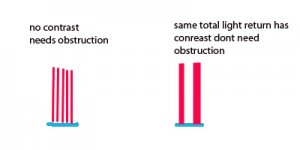- Joined
- Aug 4, 2008
- Messages
- 15,706
yes it would be a lot less of an issue and likely fine in a pendant.Date: 11/20/2009 5:57:41 PM
Author: FB.
Having been reading the comments above and doing some searches about obstruction, how would the following minor adjustments affect the performance?
Reduce table size to 53% (to reduce the area of the central part of the stone which is dark)
Increase lower halves to 80% (to reduce the width of the black ''arrow shafts'' that cause the dark reflection under the table)
Increase pavilion angle to 40.0'' (to reduce head-obstruction reflection)
Therefore, the stone becomes:
Table: 53%
Crown angle: 38.5''
Star: 50%
Pavilion angle: 40.0''
Lower half: 80%
Total depth: about 64% (slight extra depth due to smaller table meaning a higher crown if the original angle is retained)
Does that adjustment make a significant reduction in the obstruction effect? Have I learned something? Am I heading in the right direction?
At P40.2 degrees it would not be an issue at all.












300x240.png)